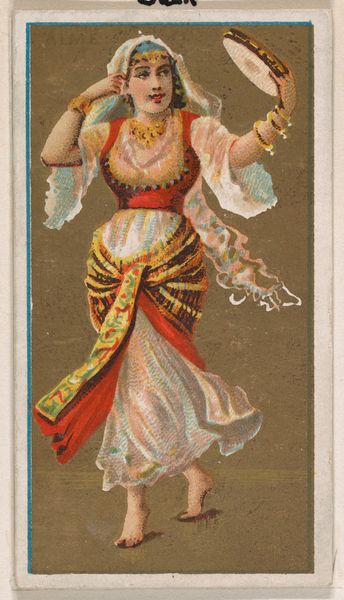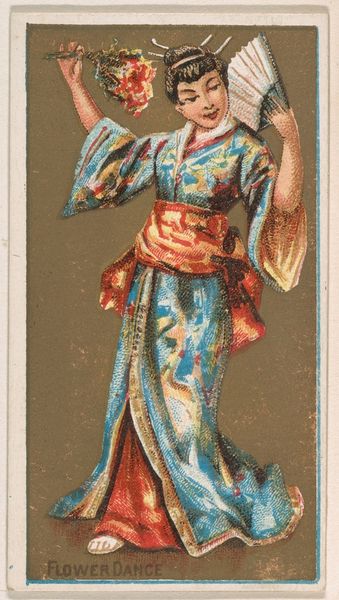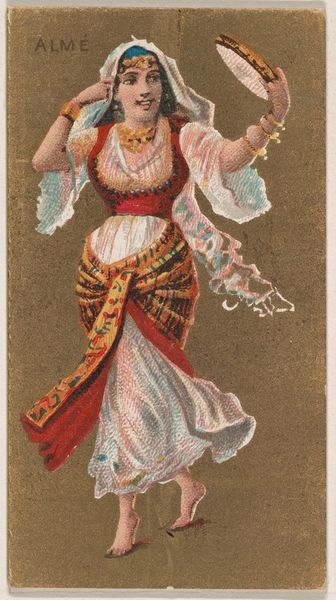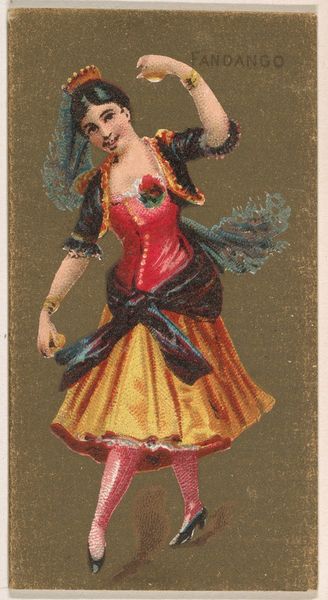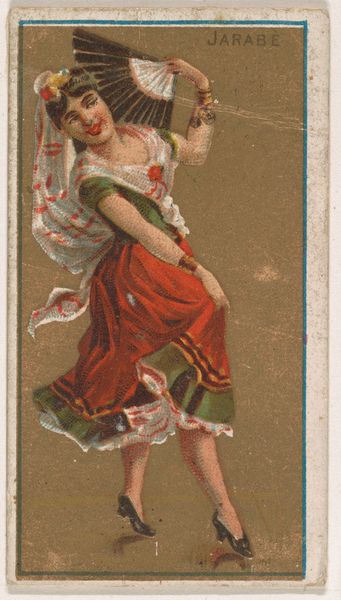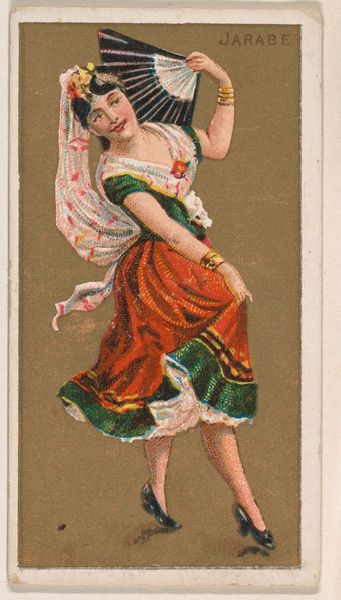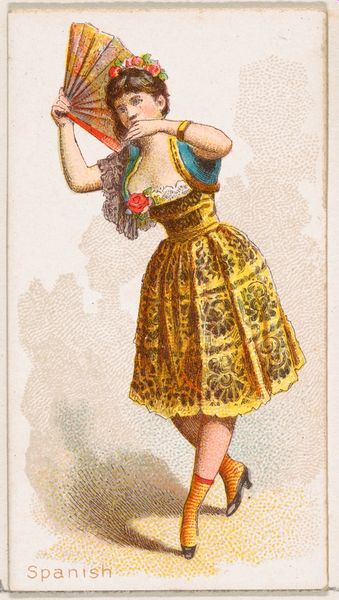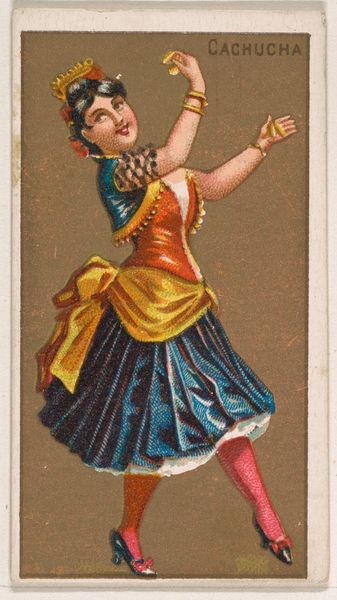
Burmese Festival, India, from the Holidays series (N80) for Duke brand cigarettes 1890
0:00
0:00
drawing, coloured-pencil, print, watercolor
#
drawing
#
coloured-pencil
#
narrative-art
# print
#
asian-art
#
watercolor
#
coloured pencil
#
orientalism
#
genre-painting
#
miniature
Dimensions: Sheet: 2 3/4 x 1 1/2 in. (7 x 3.8 cm)
Copyright: Public Domain
Curator: It feels immediately theatrical. Almost like a character poised mid-scene, from a play or ritual. There's something stylized and a little bit otherworldly about the figure. Editor: That’s a sharp observation. This print, titled "Burmese Festival, India", originates from a series of cigarette cards created around 1890 by W. Duke, Sons & Co. as part of their "Holidays" collection. The miniature artwork combines watercolor, colored pencil, and printing techniques to depict, in theory, a genre scene of celebration. Curator: “In theory” being the operative phrase. It's fascinating how these commercial images construct an idea of the "exotic" Orient for Western consumers. Look at the figure’s headdress, her ornamentation, and even her upward gaze. She appears to be captured in a moment of divine communion. It's romantic, yet detached from any genuine cultural context. Editor: Exactly. It highlights the power dynamics inherent in representation. The figure becomes a symbol, representing an imagined ‘other’ rather than conveying authentic cultural memory. Even the title places the "Burmese Festival" firmly in "India," a geographical imprecision that reinforces a generalized idea of Asia. It reduces the nuance and particularity of individual cultural expressions to fit a simplistic narrative. Curator: But does this lack of precision also carry a certain emotional resonance? I find this constructed image compelling precisely because it’s infused with such dreamy otherness. The artist blends imagination and observed details—perhaps imprecisely—but the feeling that remains speaks to a kind of idealized ritual, tapping into the universal longing for transcendence and connection with something sacred. Editor: That’s where the power of Orientalism truly resides, I think—in that carefully cultivated "dreamy otherness" which reinforced existing Western societal prejudices about these parts of the world while pretending at genuine appreciation. These images actively shaped perceptions of Asian cultures as inherently mysterious and subordinate. Cigarette cards like these normalized that skewed understanding across broad swathes of society. It all worked, as a function of both capitalist marketplace and political reality. Curator: I see your point. The artistry of it exists almost in conflict with its historical context, which further underscores its inherent complexity as both art object and propaganda. Editor: Precisely. It serves as a stark reminder of the necessity to critically examine even seemingly innocuous depictions and what purposes they might serve, historically speaking. Curator: It challenges us to actively unpack our preconceptions—historical and cultural, both—and recognize their ongoing influence. Editor: Agreed. I think this helps in the practice of doing so.
Comments
No comments
Be the first to comment and join the conversation on the ultimate creative platform.
